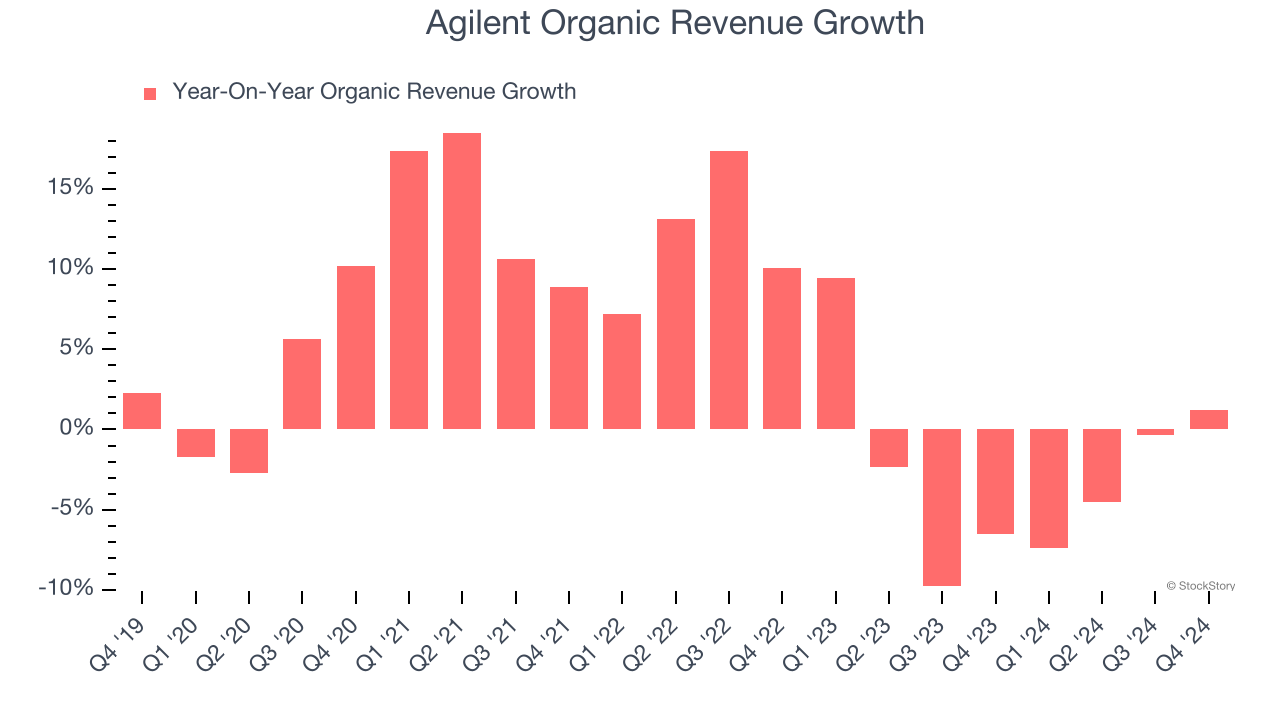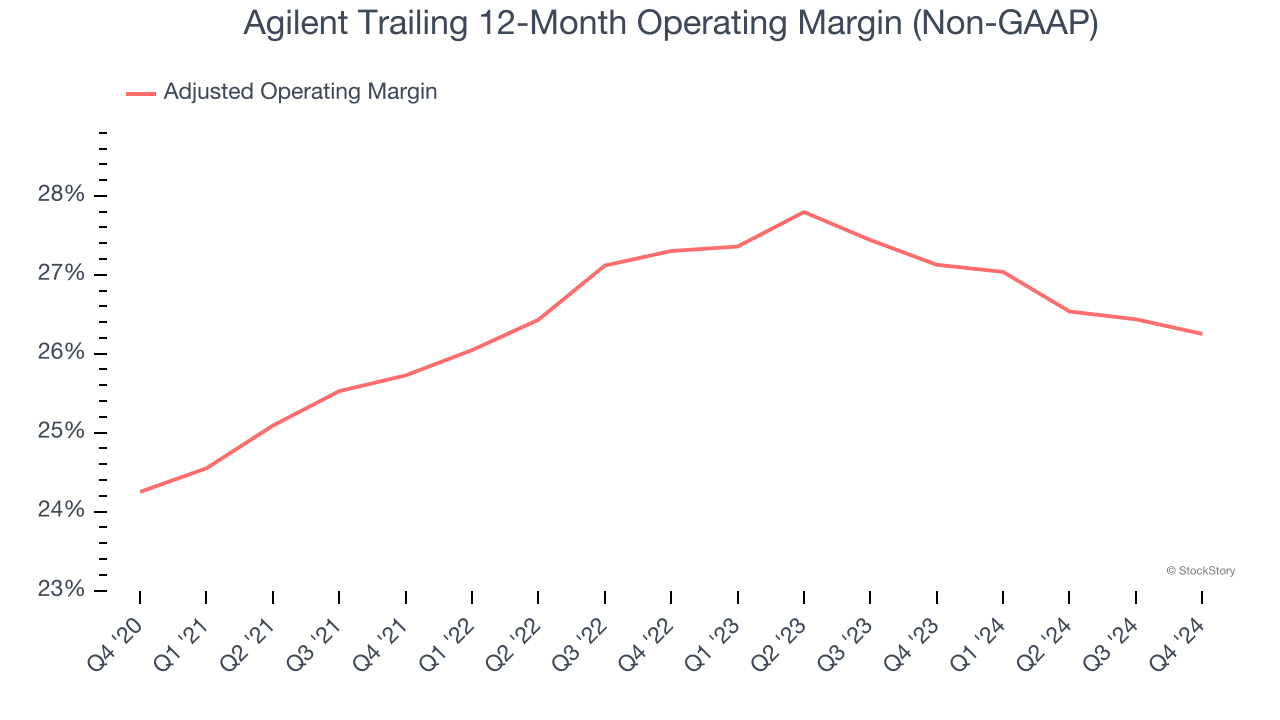
Although the S&P 500 is down 1% over the past six months, Agilent’s stock price has fallen further to $116.86, losing shareholders 10.3% of their capital. This was partly due to its softer quarterly results and may have investors wondering how to approach the situation.
Is now the time to buy Agilent, or should you be careful about including it in your portfolio? See what our analysts have to say in our full research report, it’s free.
Why Is Agilent Not Exciting?
Despite the more favorable entry price, we're cautious about Agilent. Here are three reasons why A doesn't excite us and a stock we'd rather own.
1. Core Business Falling Behind as Demand Declines
Investors interested in Research Tools & Consumables companies should track organic revenue in addition to reported revenue. This metric gives visibility into Agilent’s core business because it excludes one-time events such as mergers, acquisitions, and divestitures along with foreign currency fluctuations - non-fundamental factors that can manipulate the income statement.
Over the last two years, Agilent’s organic revenue averaged 2.5% year-on-year declines. This performance was underwhelming and implies it may need to improve its products, pricing, or go-to-market strategy. It also suggests Agilent might have to lean into acquisitions to grow, which isn’t ideal because M&A can be expensive and risky (integrations often disrupt focus). 
2. Projected Revenue Growth Is Slim
Forecasted revenues by Wall Street analysts signal a company’s potential. Predictions may not always be accurate, but accelerating growth typically boosts valuation multiples and stock prices while slowing growth does the opposite.
Over the next 12 months, sell-side analysts expect Agilent’s revenue to rise by 4.1%. While this projection indicates its newer products and services will fuel better top-line performance, it is still below average for the sector.
3. Shrinking Adjusted Operating Margin
Adjusted operating margin is a key measure of profitability. Think of it as net income (the bottom line) excluding the impact of non-recurring expenses, taxes, and interest on debt - metrics less connected to business fundamentals.
Analyzing the trend in its profitability, Agilent’s adjusted operating margin decreased by 1.1 percentage points over the last two years. This raises questions about the company’s expense base because its revenue growth should have given it leverage on its fixed costs, resulting in better economies of scale and profitability. Its adjusted operating margin for the trailing 12 months was 26.3%.

Final Judgment
Agilent’s business quality ultimately falls short of our standards. Following the recent decline, the stock trades at 20.2× forward P/E (or $116.86 per share). This multiple tells us a lot of good news is priced in - we think there are better opportunities elsewhere. We’d recommend looking at a fast-growing restaurant franchise with an A+ ranch dressing sauce.
Stocks We Would Buy Instead of Agilent
Market indices reached historic highs following Donald Trump’s presidential victory in November 2024, but the outlook for 2025 is clouded by new trade policies that could impact business confidence and growth.
While this has caused many investors to adopt a "fearful" wait-and-see approach, we’re leaning into our best ideas that can grow regardless of the political or macroeconomic climate. Take advantage of Mr. Market by checking out our Top 6 Stocks for this week. This is a curated list of our High Quality stocks that have generated a market-beating return of 176% over the last five years.
Stocks that made our list in 2020 include now familiar names such as Nvidia (+1,545% between March 2020 and March 2025) as well as under-the-radar businesses like the once-micro-cap company Tecnoglass (+1,754% five-year return). Find your next big winner with StockStory today.
